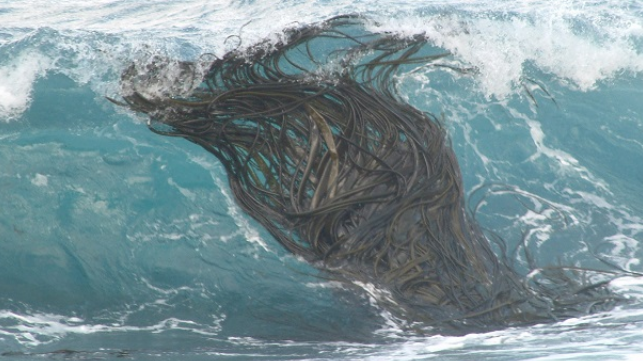Record: Foreign Kelp Washes Up in Antarctica

An unexpected find of southern bull kelp on an Antarctic beach has revealed the longest known biological rafting event ever recorded. DNA samples taken from the kelp revealed that one specimen drifted from the Kerguelen Islands in the Southern Indian Ocean and another from South Georgia in the South Atlantic Ocean. The kelp drifted an estimated 20,000 kilometers (12,400 miles), passing through what were thought to be impenetrable currents and winds.
New ocean modeling developed by Australian researchers trying to understand how the journey occurred has highlighted that this may not be a rare event and that kelp and floating pollution is likely to be reaching Antarctic shores more regularly than previously thought.
Strong westerly winds and surface currents are expected to drive floating objects north and away from Antarctica. But when the disruptive influence of Antarctic storms is factored in, that changes. The research team incorporated wave-driven surface motion, which is especially pronounced during storms, into their modeling which then indicated the possibility of debris arriving on the Antarctic coastline.
“This finding shows us that living plants and animals can reach Antarctica across the ocean, with temperate and sub-Antarctic marine species probably bombarding Antarctic coastlines all the time,” said lead author Dr Ceridwen Fraser from the Australian National University. Fraser says the arrival of the kelp shows that Antarctic ecosystems could be more vulnerable to global warming than previously thought. “Parts of Antarctica are among the fastest warming places on Earth. If plants and animals get to Antarctica fairly frequently by floating across the ocean, they will be able to establish themselves as soon as the local environment becomes hospitable enough.”
The researchers say their results have important implications for the science of ocean drift that is used to track plastics, plane crash debris and other floating material and the new modeling technique could be applicable to other regions.
